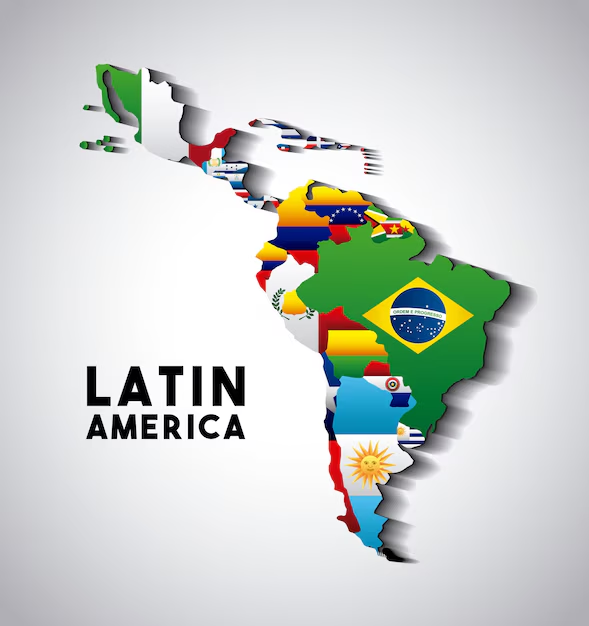Bridging the Digital Divide: Empowering South America Through Internet Access and Digital Literacy
In an increasingly interconnected world, digital literacy and reliable internet access are no longer luxuries but fundamental necessities for full participation in society. However, a significant digital divide persists in South America, hindering the region's potential for economic growth, social progress, and overall well-being. This disparity demands immediate attention and collaborative action from both North and South America to build a more equitable and prosperous future for all.
The challenges are multifaceted, demanding a comprehensive approach. Consider these key factors impacting digital inclusion in South America:
- Unequal Internet Access: Vast swathes of South America lack reliable and affordable internet connectivity. This digital disconnect isolates communities from the wealth of opportunities offered by the digital age, perpetuating existing inequalities.
- Education Inequality: Limited access to digital resources creates significant educational disparities, particularly for students in remote areas. This hinders their ability to acquire crucial skills necessary for success in the modern workforce, limiting their future prospects.
- Economic Disparity: Digital literacy and internet access are crucial catalysts for economic growth. Bridging the digital gap unlocks South America's economic potential, creating numerous job opportunities and fostering entrepreneurship.
- Social Exclusion: Internet access serves as a vital platform for marginalized communities to participate in social and political discourse, share their cultures, and advocate for their needs. Without it, their voices remain unheard, reinforcing existing power imbalances.
- Healthcare Accessibility: The internet facilitates remote healthcare services, including telemedicine, enabling individuals in rural areas to access medical advice and treatment without the need for extensive travel, thereby improving healthcare access and outcomes.
- Entrepreneurial Growth: Digital literacy empowers individuals to start and grow their own businesses, fostering innovation and driving local economic development. This fosters self-reliance and promotes sustainable economic growth within communities.
- Urban-Rural Divide: Improved digital connectivity can effectively bridge the gap between urban and rural communities, ensuring equitable access to resources and opportunities, fostering a more cohesive society.
- Strengthening Democracy: Internet access promotes transparency and accountability, fostering greater citizen engagement and participation in democratic processes. This empowers citizens to hold their governments accountable and participate meaningfully in shaping their future.
- Expanding Educational Opportunities: Digital literacy enables access to online education, providing learning opportunities for individuals who may lack access to traditional schools or universities, expanding educational access and promoting lifelong learning.
- E-commerce Development: Increased internet penetration allows small businesses to expand their market reach through e-commerce platforms, stimulating economic growth and creating new business opportunities.
- Cultural Preservation: The internet offers a powerful tool for preserving and sharing South America's rich cultural heritage with the global community, fostering cultural pride and understanding.
- Environmental Sustainability: Digital literacy promotes environmental awareness and facilitates the adoption of sustainable practices, empowering individuals to actively contribute to a greener future.
- Bridging Generational Gaps: Providing digital literacy skills to older generations bridges the digital divide between age groups, facilitating intergenerational knowledge exchange and fostering social inclusion.
- Improved Government Services: Internet access improves efficiency and accessibility of government services, enhancing the quality of life for citizens and promoting good governance.
- Empowering Future Leaders: Investing in digital literacy and internet access equips the next generation of South American leaders with the essential skills needed to navigate the complexities of the digital world and drive future progress.
Addressing the digital divide in South America requires a collaborative effort. Investing in affordable and reliable internet infrastructure, implementing comprehensive digital literacy programs, and supporting initiatives that promote digital inclusion are crucial steps towards building a more equitable and connected society. This collaboration should involve governments, private sector organizations, non-profits, and individuals working together to achieve lasting change.
We must all ask ourselves: How can we contribute to bridging the digital divide? How can we support initiatives that promote digital literacy in our communities? By actively engaging in these conversations and supporting these crucial initiatives, we can collectively make a profound difference in the lives of millions and foster sustainable development throughout South America. Let us work together to unlock the transformative power of technology for the benefit of all.
#DigitalLiteracy #InternetAccess #SouthAmerica #BridgingTheDivide #DigitalInclusion #EconomicDevelopment #SocialProgress #SustainableDevelopment




No comments yet. Be the first to share your thoughts!